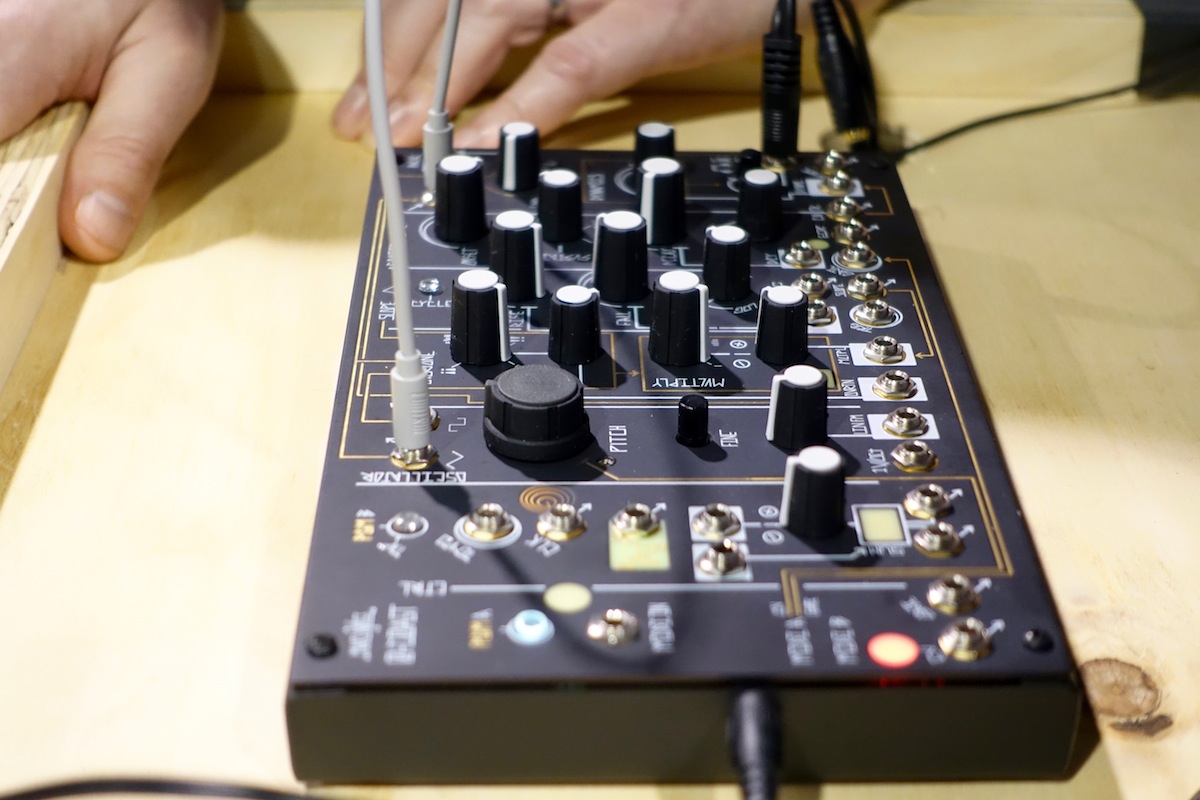Synths Preposterously Big and Remarkably Small: NAMM 2016
The modular world joins the big players at this year's edition of the annual music-gear expo.
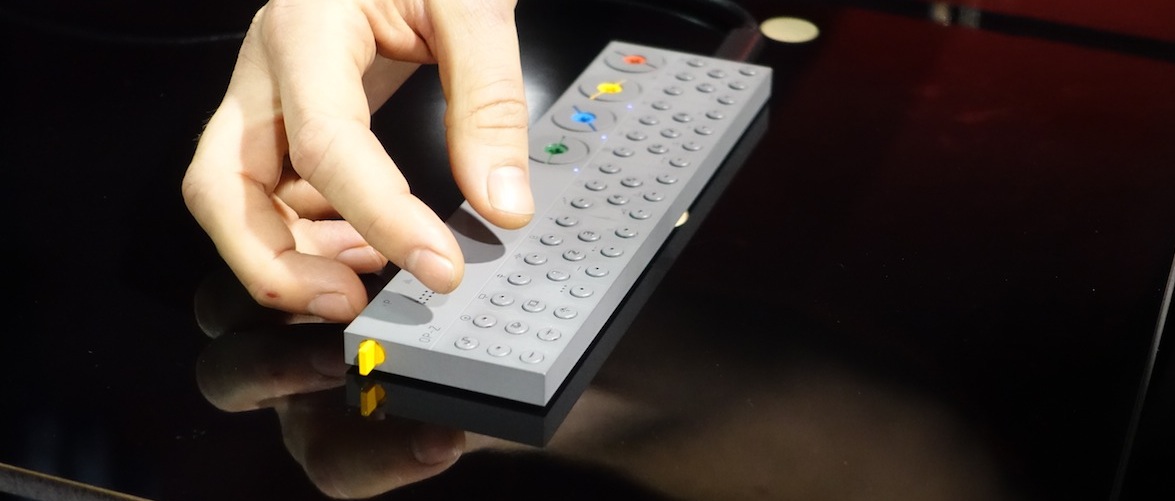
Synths Preposterously Big and Remarkably Small: NAMM 2016
The modular world joins the big players at this year's edition of the annual music-gear expo.

Set up right next door to Disneyland (as usual) in Anaheim, California, this year’s NAMM show was again a loud mess of humanity and machines, dotted with tiny bits of musical brilliance. We saw synths preposterously big and remarkably small, and great ideas from both big players and boutique shops. For the first time, the modular development community—normally relegated to the basement—found itself with prime placement in the main expo hall, alongside big players like Korg and Pioneer. Here’s a rundown of the best things we saw at the show.
Teenage Engineering OP-Z
Teenage Engineering showed up at this year’s NAMM with a brand new trio of Pocket Operators, called the Arcade, Office, and Robot, all of which look fantastic. But even more exciting was its newest synthesizer project, which it kept out of the limelight (entirely absent from its NAMM newsletter and tucked away in the back of its booth)—the OP-Z. The studio’s successor to the OP-1 was easily some of the most marvelous kit at this year’s show. Codenamed the “little monster,” the TV–remote-sized, 16-track multitimbral synthesizer is essentially an even more portable, more powerful all-in-one music creation and performance machine. The sequencer is full of cool flourishes like fully sequenceable parameter locks and cool quick edits, and the device itself supports modular upgradeability via slots on the top of the unit. A brilliant visual component drives an app on the connected screen of your choice via Bluetooth, synced tightly to the music you’re playing on the machine itself. The OP-Z is slated for release in 2017, which suddenly can’t come soon enough.
Arturia MatrixBrute
It looks like one of those Photoshop comps that synth manufactures tend to broadcast on April Fools Day, but we can attest to the fact that Arturia’s MatrixBrute is a real, functional thing. The synth has a semi-modular design, complete with a “modulation matrix” that allows you to route any of its 16 modulation sources to 16 modulation destinations; unlike traditional modular systems, this means you can save your sounds in its patch memory. That epic button matrix also functions as a 64-step sequencer. Features include rtue analog effects like chorus, delay and flanger, along with 12 CV inputs and outputs for routing other modular gear into the system. No specifics yet on price, but rumors have it that’s it’s a couple of months away and a couple of thousand bucks steep.
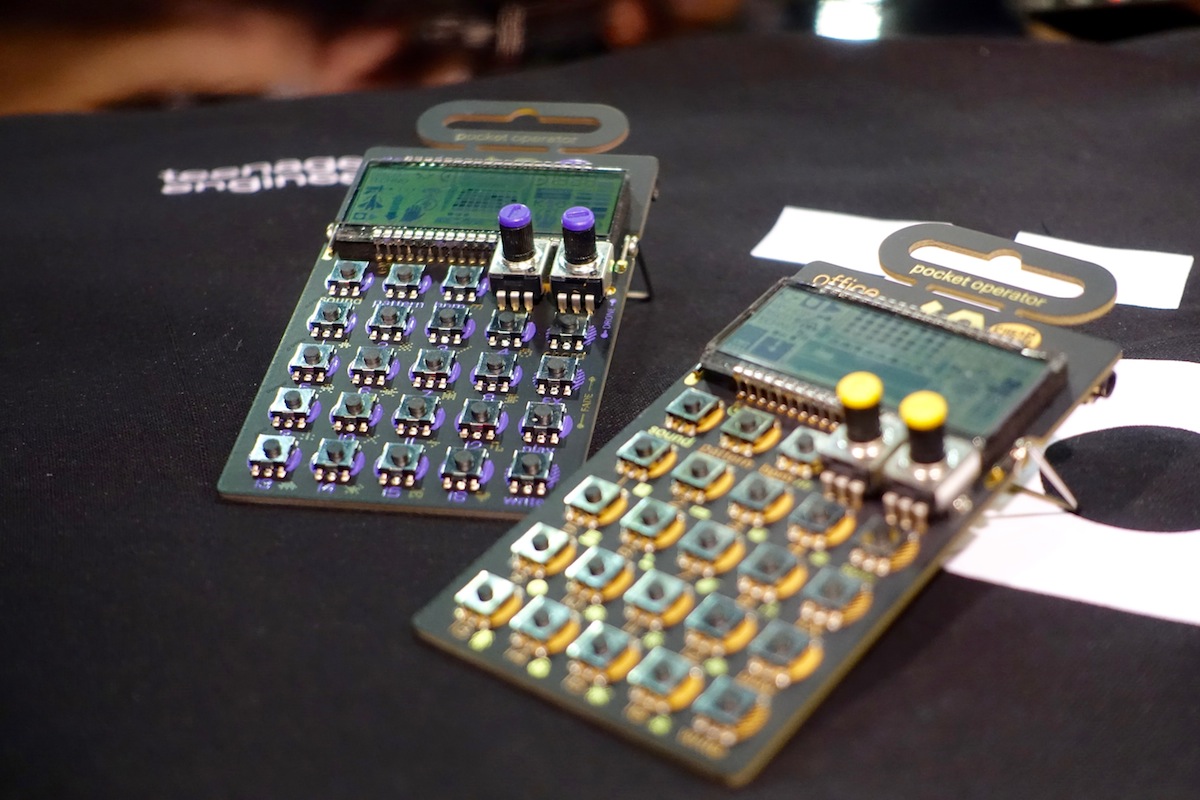
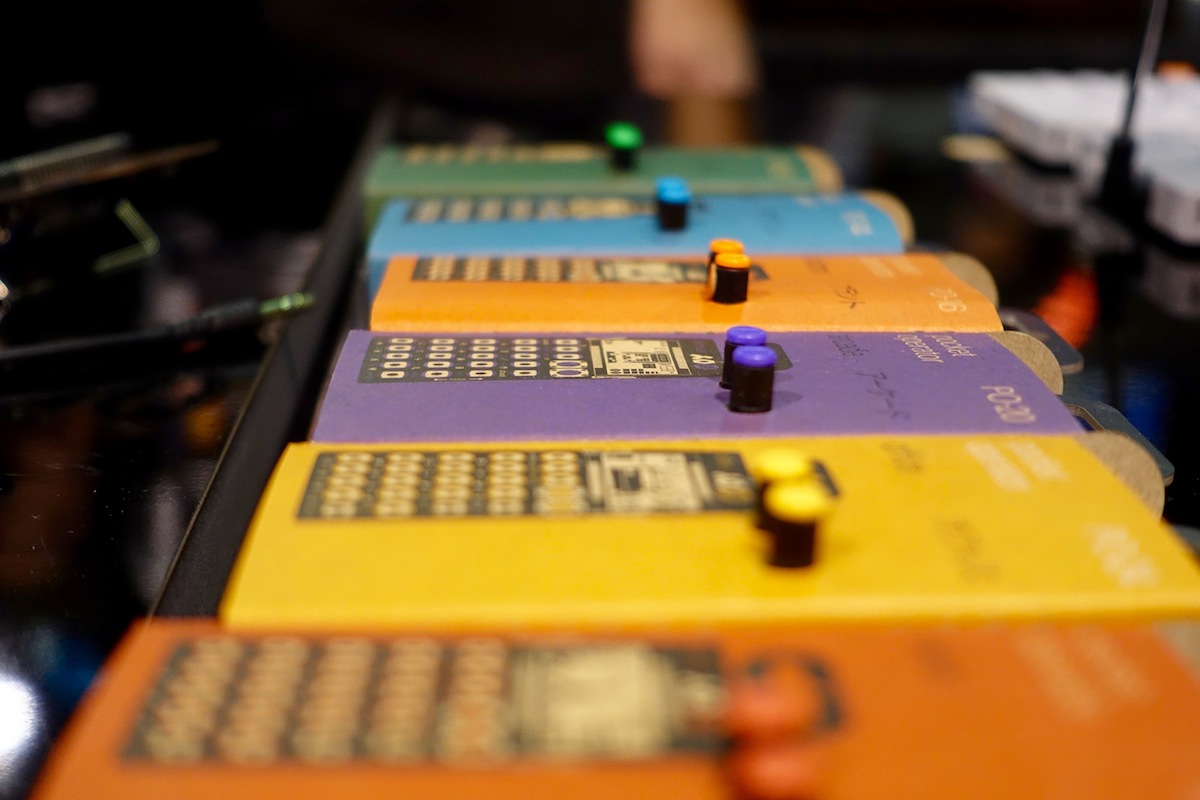
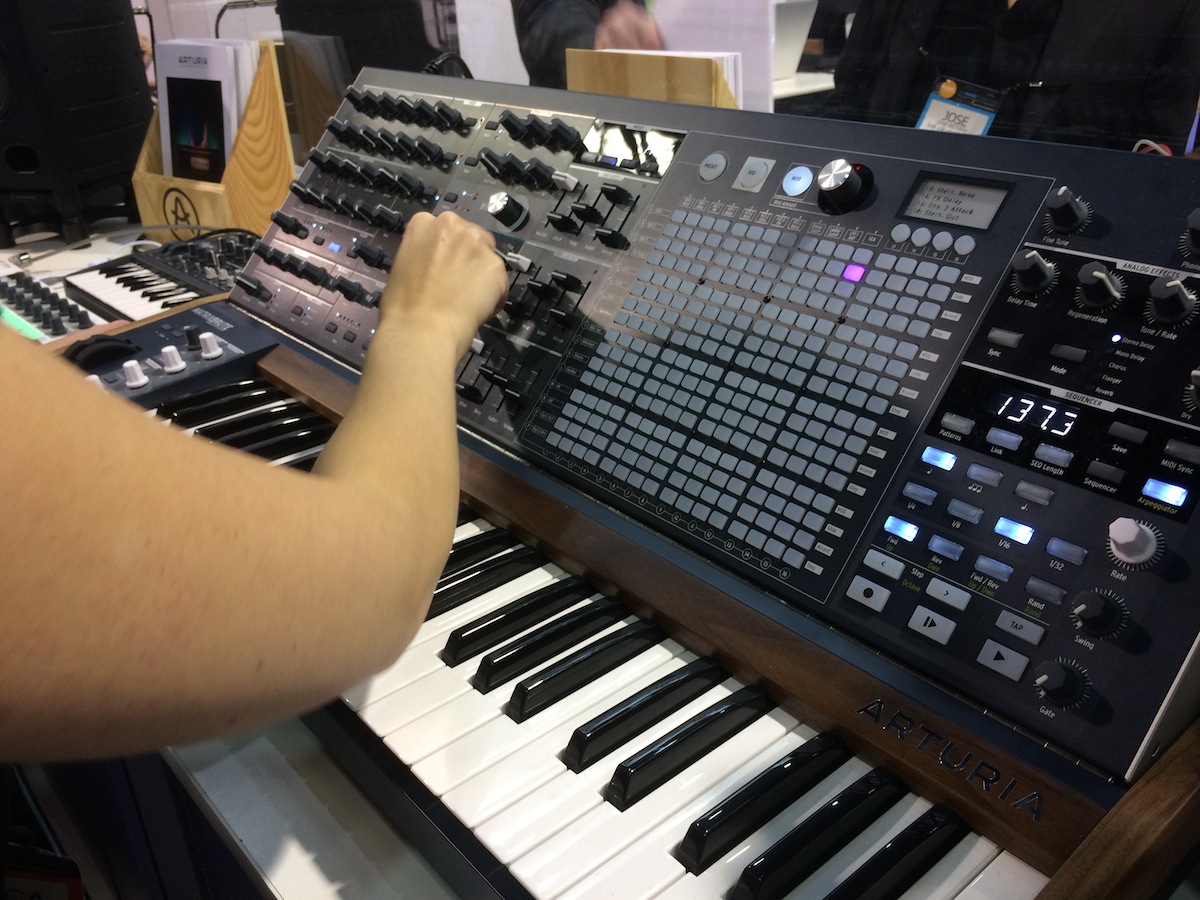
Booth of the Decade: Moog
The notion of a desert oasis in the middle of the gaping, fluorescent-lit hellscape that is the NAMM show floor seems rather absurd, but Moog’s execution of exactly that was nothing short of an expo-hall design masterpiece. With dozens of cushions set up in front of recent Moog synth rigs and accompanying headphones, show-goers were able to sample the company’s handmade wares on private, surprisingly cozy terms. The surroundings were full of beautiful printed illustrations that invoked a ’60s desert acid-trip aesthetic, along with hundreds of imported cacti rented from a nearby SoCal company…one that apparently rents cacti.
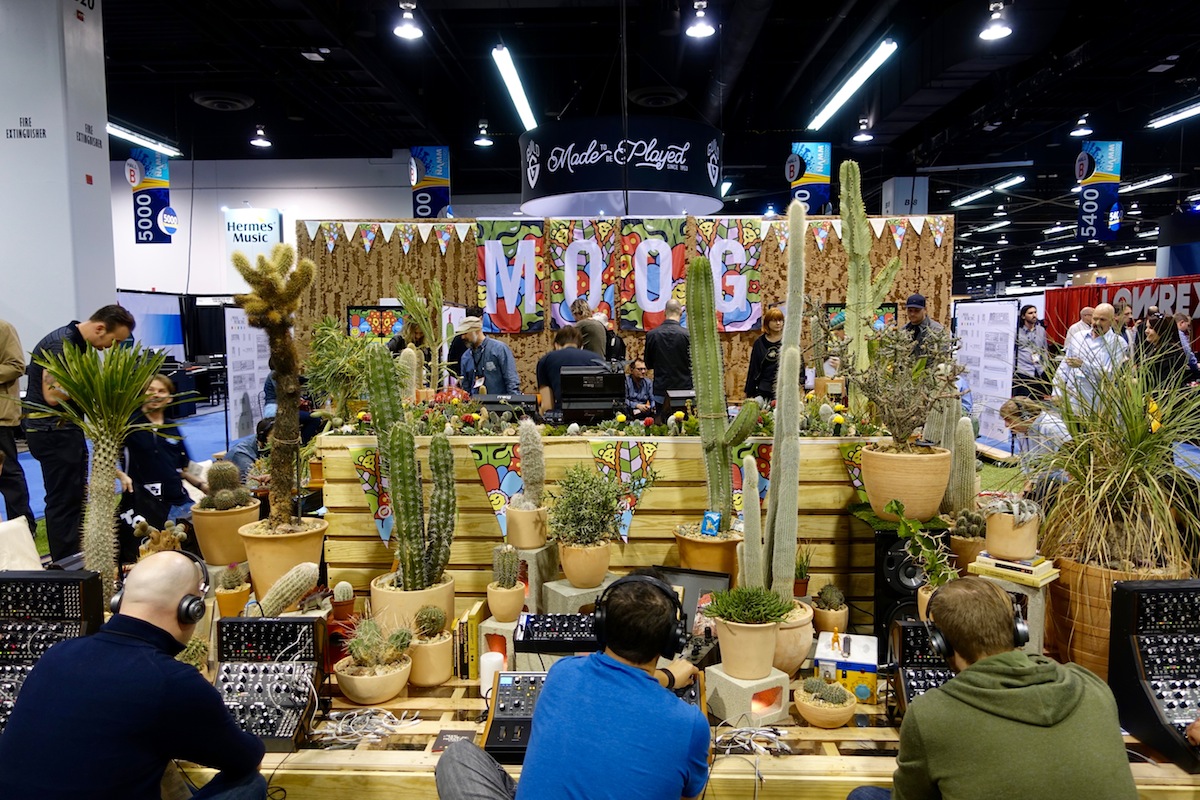
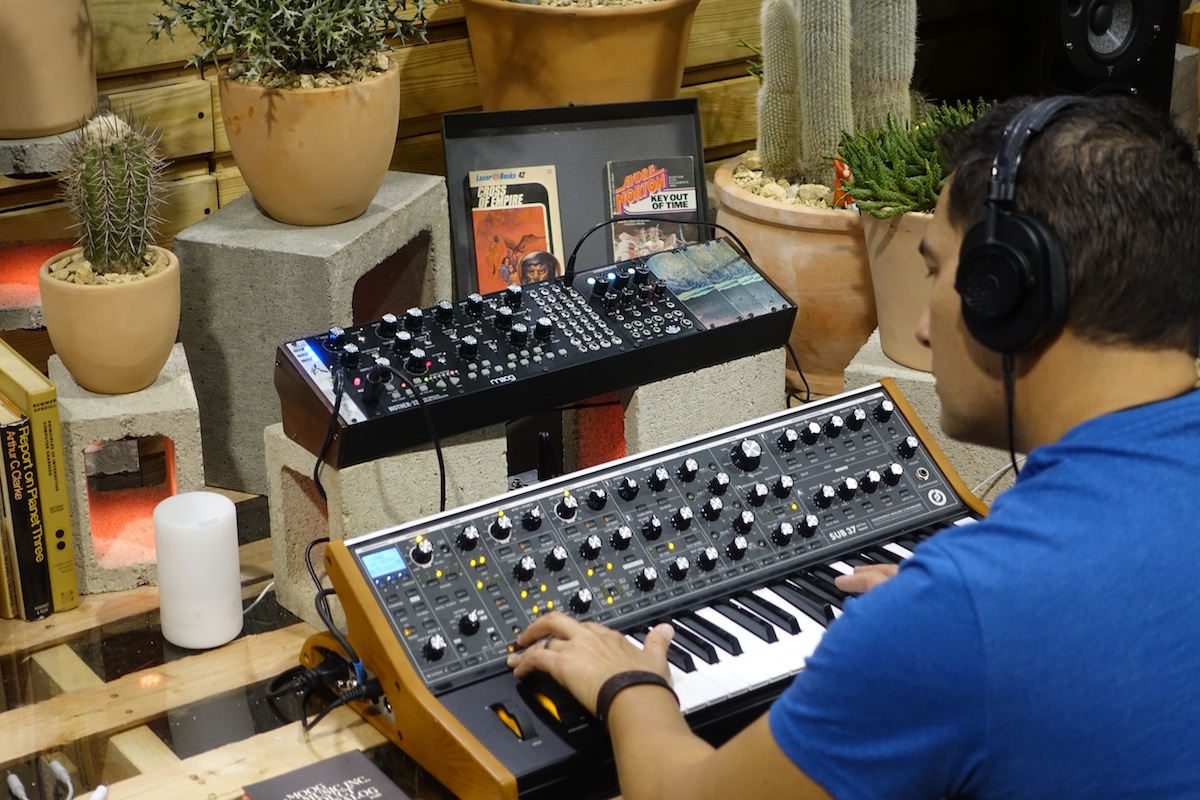
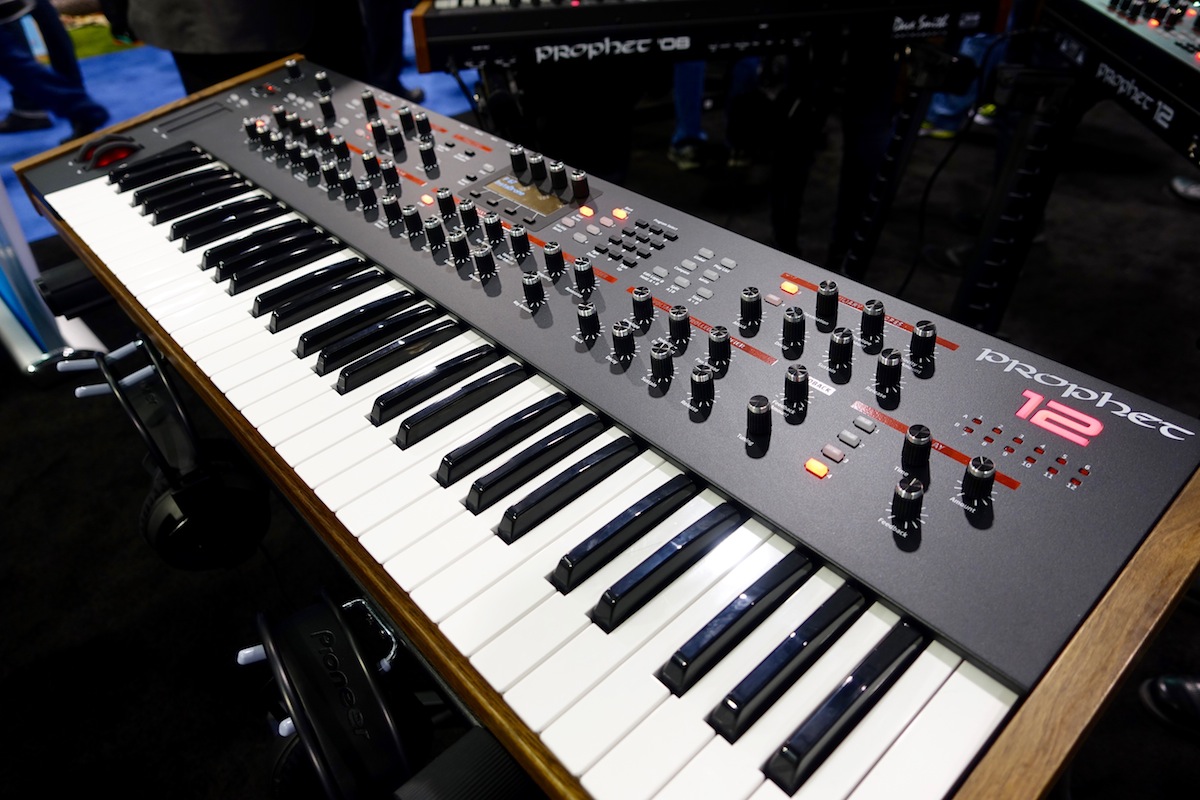
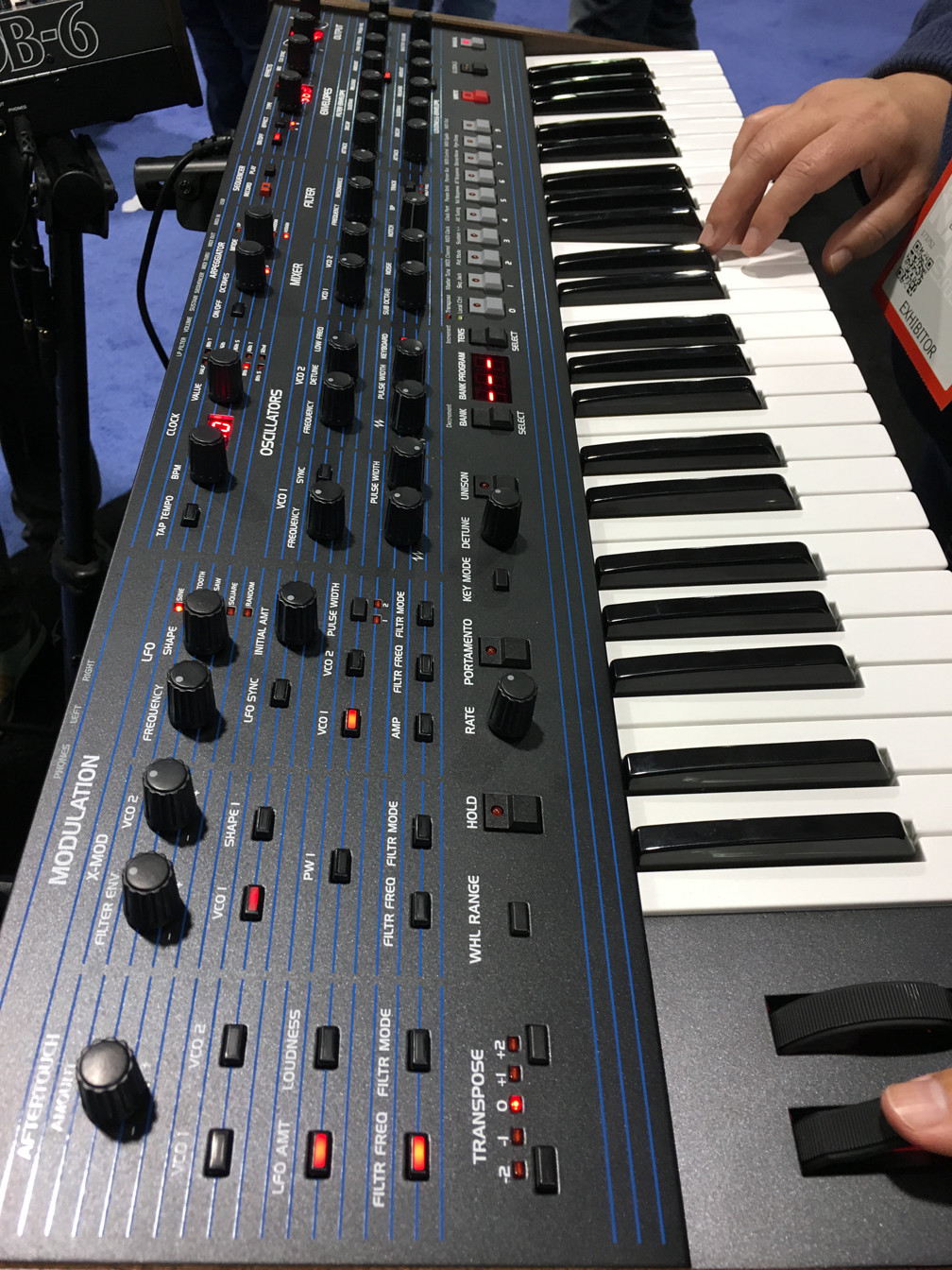
Dave Smith Instruments OB-6
The latest collaboration between synthesizer design legends Dave Smith and Tom Oberheim sounds lush as heck. This sexy polyphonic beast is a six-voice, 49-key analog synth, manufactured by Dave Smith Instruments and with a sound engine inspired by Oberheim’s classic SEM architecture. It features two discrete voltage-controlled oscillators (plus sub-oscillator) per voice, and its four-octave, semi-weighted keyboard is velocity and aftertouch sensitive. A 64-step polyphonic sequencer, and faithful recreations of Oberheim’s signature phase shifter and ring modulator, round out the package. It sounds bloody fantastic, and is slated for release in March at a price of $2,999.
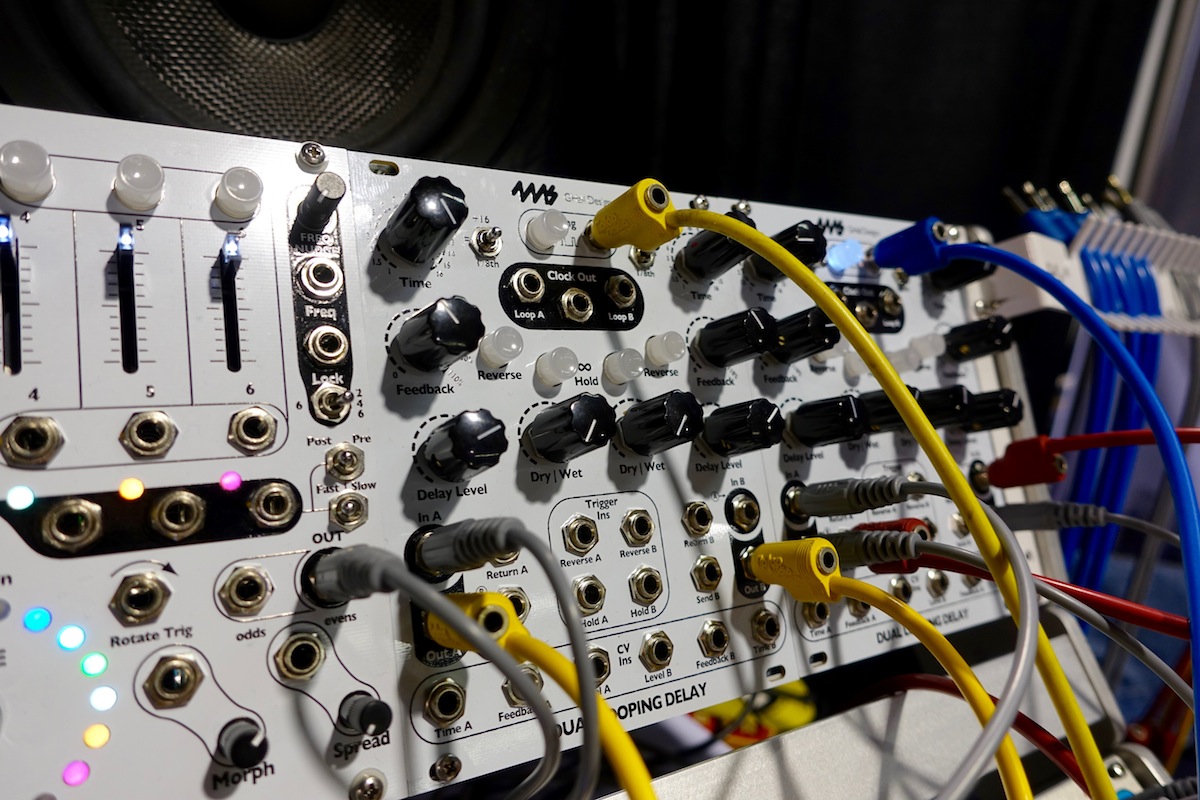
Modular Action
While there was more modular gear being shown than we have space for here, some standouts included the 4ms Dual Looping Delay, Modal’s Eurorack modules (based on its 002 and 008 synths), Roland’s System-500 modules (now available), and new modules from Malekko Heavy Instruments, Rossum, and plenty more. Waldorf took the occasion to release its first ever Eurorack modules as well, along with its kb37 keyboard case in which to house them.
Korg Volca FM and Minilogue
For fans of the volca series and the sound of Yamaha’s classic DX-7, Korg’s volca FM brings lots of freaky frequency modulation to the table. Featuring a six-operator engine attached to a ribbon-style keyboard/step sequencer (similar to those found on the rest of the volca range), there’s a relatively simple interface for achieving some amazing sounds. There’s a dial for moving through different algorithms, which control how the six operators interact with another, and another one for selecting presets. You have control over attack and decay lengths of both the carrier and modulator, along with an LFO with depth and rate controls, and an onboard arpeggiator. The volca FM is a three-voice polyphonic synth (with poly, mono and unison modes available), and should be shipping in the next few months. Announced just days before the show, the company’s minilogue also looks great. A four-voice analog synthesizer, it has an onboard, automatable 16-step polyphonic note and motion sequencer, a terrifically cute OLED screen oscilloscope for visual waveforms, and it’s all housed inside a sexy aluminum top and wood back panel. It’s got MIDI, USB MIDI, and Audio Sync for all types of connectivity, including direct sync with Korg’s SQ1, volca, and electribe lines. Oh, and it’s available now for a rather tantalizing $499.
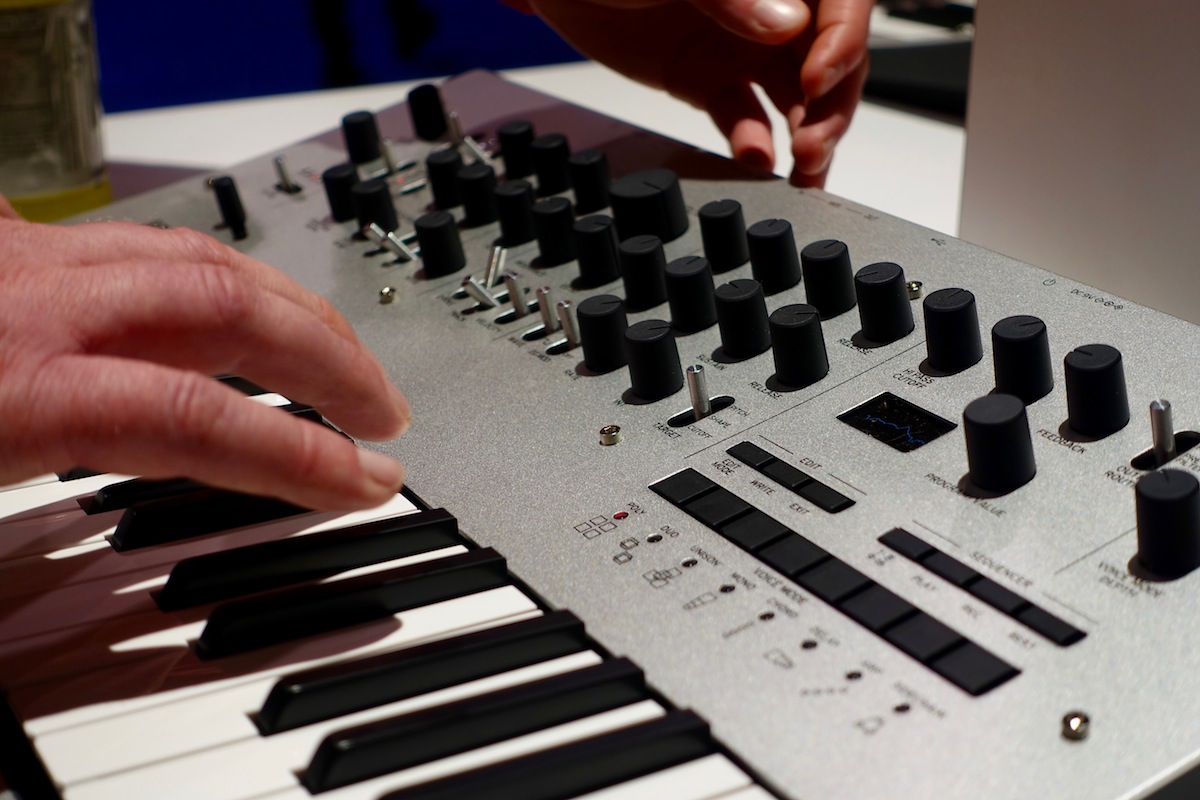
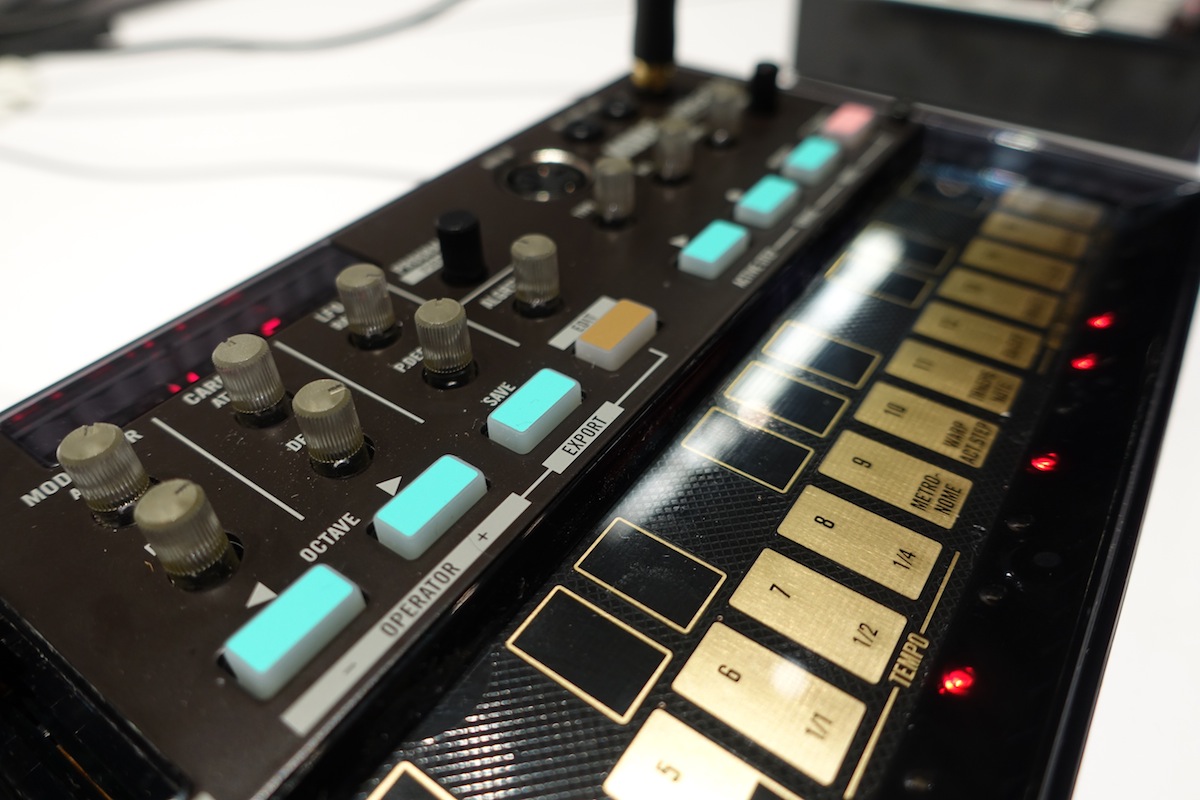
Zoom ARQ
Zoom’s ARQ Aero RhythmTrak still has us scratching our head a bit, but it’s certainly intriguing. A drum machine, sequencer, synthesizer, looper and MIDI controller, the ARQ is sized and shaped like a tambourine, and its built-in accelerometer means you can kinda play it like one, too. There’s a Base Station and removable Bluetooth Ring Controller; sounds are stored in the Base Station (to which you can also record or upload your own sounds), which are then triggered by the controller using its 96 velocity- and pressure-sensitive pads, or by waving and twisting it around in rhythmic fashion for modulation. Very strange indeed, but this performance-oriented piece gear (from an unlikely source) may have some potential. $599, available in April.
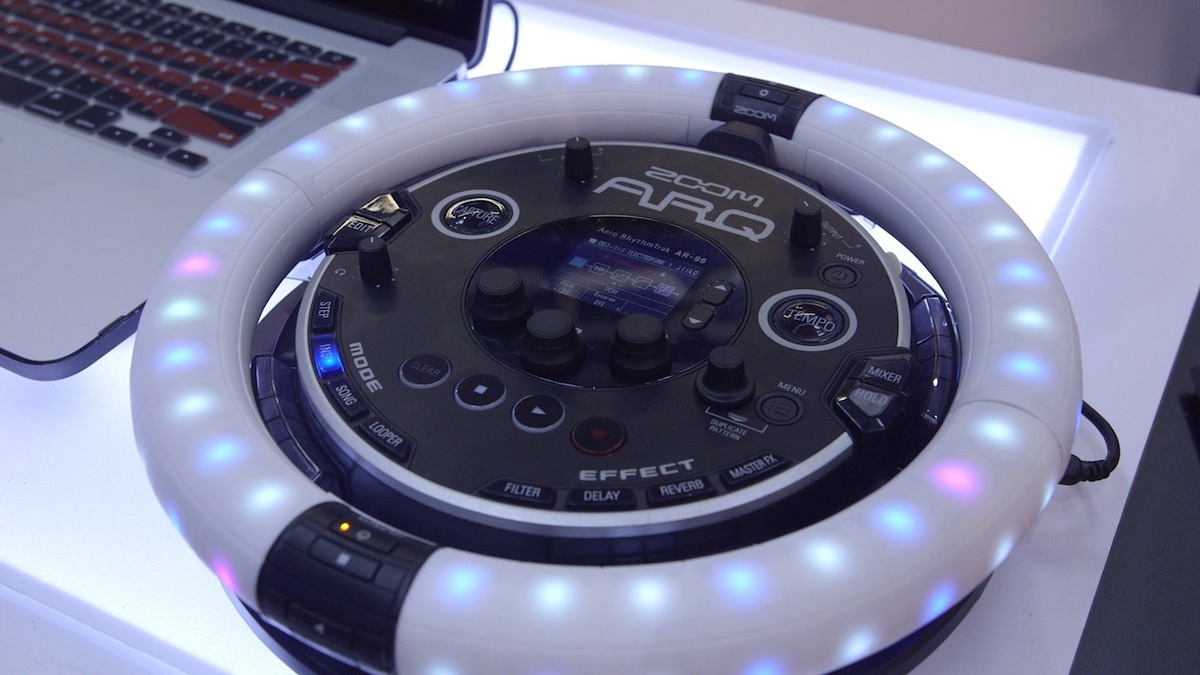
Make Noise 0-Coast
The first standalone device from the folks at Make Noise, the 0-Coast is a small, patchable single voice monosynth that combines features of both East Coast and West Coast synthesis techniques. Though there’s no filter onboard, filtering effects come from the Overtones and Balance section. There’s a built MIDI to CV converter, so you can easily plug a MIDI keyboard to control the synth in more traditional East coast style. There’s a ton you can do with this tiny thing, thanks to inclusions like a slope generator and multiplier. The 0-Coast will be shipping in two to three months for $499. Expect a full review soon.
